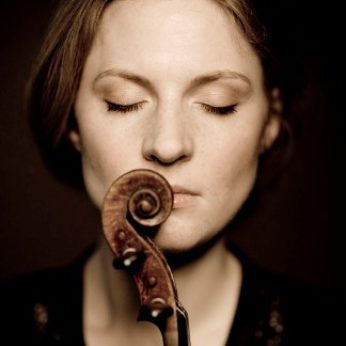Composer: Béla Bartók (b. 1881 - d. 1945)
Performance date: 01/07/2012
Venue: Bantry Library
Composition Year: 1922
Duration: 00:21:09
Recording Engineer: Anton Timoney, RTÉ lyric fm
Instrumentation: vn, pf
Instrumentation Category:Duo
Artists:
Tanja Becker-Bender -
[violin]
Péter Nagy -
[piano]

Brilliant violinists inevitably play a
crucial part in many composers’ lives, perhaps most famously in the
long and fruitful collaboration between Brahms and Joachim. There
were three important violinists in Bartók’s career, Joseph Szigeti
for whom he wrote the two Rhapsodies and Contrasts, Yehudi
Menuhin for whom he wrote the solo sonata and the beautiful Jelly
Arányi, for whom the two duo sonatas were written. Jelly was a
charismatic and popular Hungarian violinist with influential contacts
in Britain, who had known Bartók since their student days together.
She suggested that he write a work for her and Bartók quickly saw
that a recital tour with her would be an ideal way to improve his
standing in Europe. And he was far from immune to the prospect of
travelling and performing with such an enticing companion.
Bach in his Cello Suites borrows the
dance forms of his time to create the formal outline of his work.
Bartók in turn builds his Sonata around a folk-derived motto played
by the violin in almost the first bars. This motto is inspired by the
dreamy style of the Romanian hora lung? and it recurs as a
motif throughout the piece before being transformed in the final bars
from its improvisatory folk origins into a regular strophic melody.
Bartók was of course an ethnomusicologist of renown, spending much
of his time researching and collecting folk music and dances both in
the field and in libraries. His work was both a rescue operation and
discovery of ethnic music on the verge of extinction as well as an
enrichment of his own work through his extraordinary assimilation of
the atmosphere of the music of the Hungarian hinterland. Here also
was another attraction of the violin as the fiddle was a recognised
folk instrument and it could be used to reflect the reality of
village performances, especially in the wilder reaches of the second
movement of this Sonata.
Another remarkable feature of this
Sonata is that the two instruments hardly ever share any thematic
material, Bartók goes out of his way to keep their two worlds apart.
On the whole the violin part is dominated by long legato phrases and
the piano part by chord progressions and the percussive gestures that
are so typical of Bartók, though the reality is a lot more complex.
The first movement is punctuated by returns of the Romanian theme in
a series of radical transformations that nonetheless retain the
tenderness of the original. The frenzied second movement begins with
some savage violin pizzicatos that build up the tension before the
wild gypsy fiddling takes over and we are overwhelmed by a stunning
acrobatic demonstration by both instruments. The display closes with
a last appearance of the Romanian theme in its final aery
incarnation.
Copyright © 2025 West Cork Music. All rights reserved.
Designed and developed by Matrix Internet